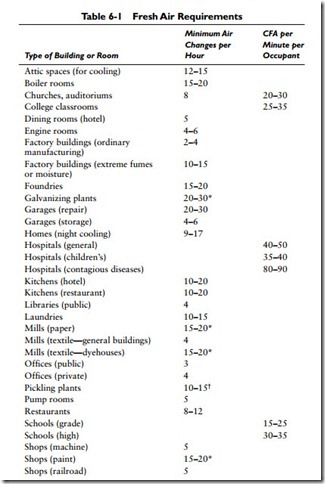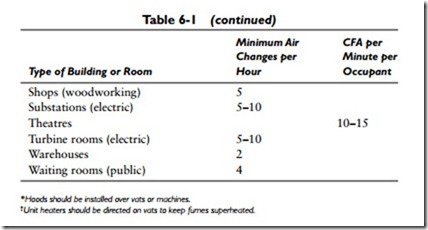Mechanical Ventilation
Mechanical ventilation is the process of supplying or removing air by mechanical means. In other words, it represents a form of forced ventilation. Some form of mechanical ventilation is necessary when the volume of air required to ventilate a space cannot be delivered adequately by natural means. As a result, it may be necessary to add a fan (or fans) to the ventilation system in order to obtain the required rate of air change.
Mechanical ventilation involves the use not only of fans but also of ducts in some larger systems. The selection, installation, and operation of fans are described in Chapter 7 (“Fan Selection and Operation”). All aspects of duct sizing, the resistance to airflow, and other related aspects are described in considerable detail in Chapter 7 of Volume 2 (“Ducts and Duct Systems”).
Air Ventilation Requirements
The volume of air required for proper ventilation is determined by the size of the space to be ventilated and the number of times per hour that the air in the space is to be changed. Table 6-1 gives some recommended rates of air change for various types of spaces. The volume of air required to ventilate a given space is determined by dividing the volume of the space by the number of minutes shown for that space in the “rate of change” column in Table 6-1.
In many cases, existing local regulations or codes will govern the ventilating requirements. Some of these codes are based on a speci- fied amount of air per person and others on the air required per foot of floor area. The table should thus serve only as a guide to average conditions; where local codes or regulations are involved, they should be taken into consideration.
If the number of persons occupying a given space is larger than would be normal for such a space, the air should be changed more often than shown in the table. It is recommended that an air exchange rate of 40 cubic feet per minute per person be allowed for extremely crowded spaces.
If the cooling effect of rapid air movement is needed in localities that have high temperatures or humidities, the number of air changes shown in Table 6-1 should be doubled.

